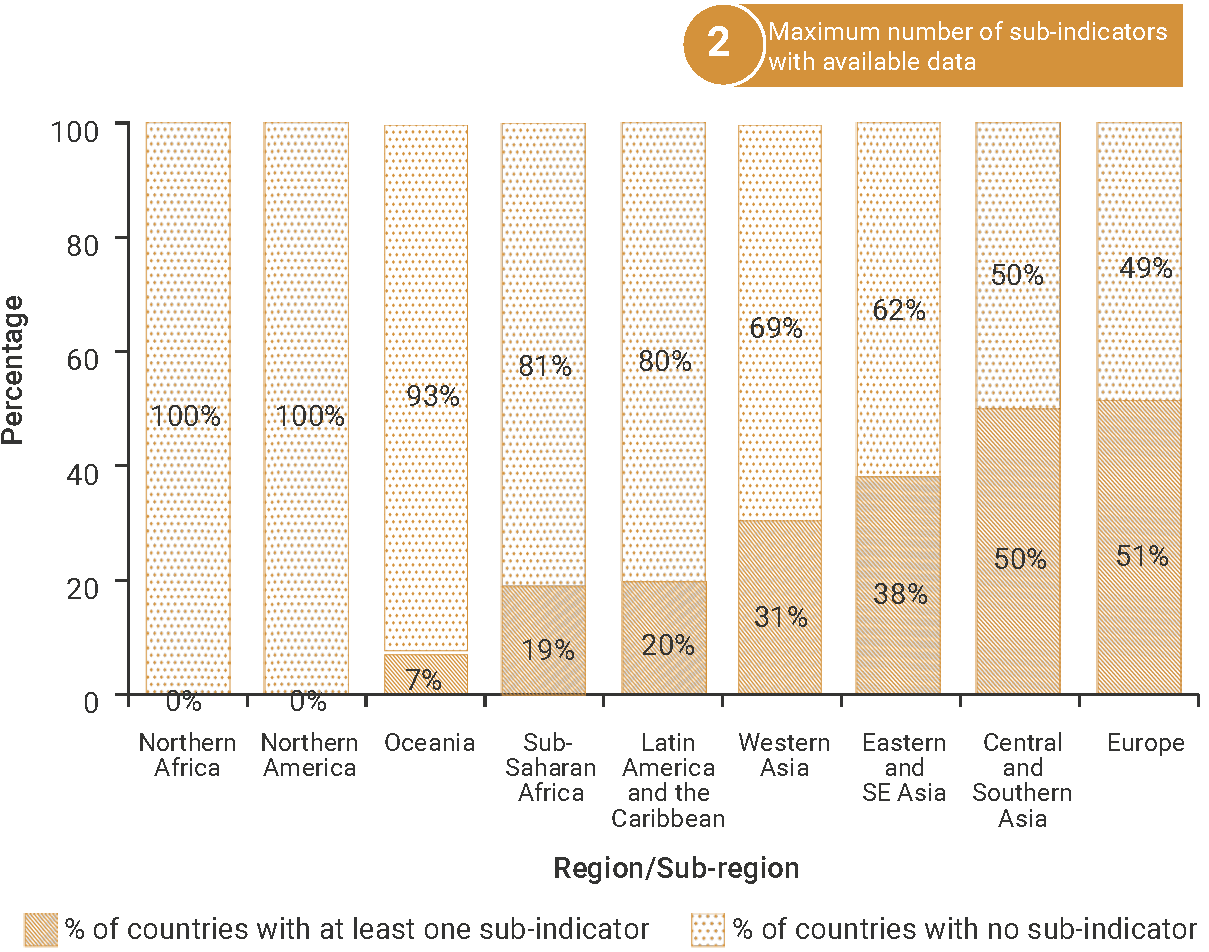SDG Indicator 14.c.1: Number of countries making progress in ratifying, accepting and implementing through legal, policy and institutional frameworks, ocean-related instruments that implement international law, as reflected in the United Nations Convention on the Law of the Sea, for the conservation and sustainable use of the oceans and their resources
1. Key features and metadata
Definition: This indicator measures progress made by countries in: (a) ratifying and acceding to ocean-related instruments that implement international law as reflected in the United Nations Convention on the Law of the Sea (UNCLOS), and (b) implementing such instruments through legal, policy and institutional frameworks.
| Sub-indicator | Disaggregated by |
|---|---|
|
ER_UNCLOS_RATACC Score for the ratification of and accession to UNCLOS and its two implementing agreements (%) |
No current data disaggregation available.
|
|
ER_UNCLOS_IMPLE Score for the implementation of UNCLOS and its two implementing agreements (%) |
Sources of information:data provided by countries to the Division for Ocean Affairs and the Law of the Sea of the United Nations Office of Legal Affairs by way of a questionnaire.
Related SDG Indicators: All other SDG 14 indicatorsand 17.14.1 (Number of countries with mechanisms in place to enhance policy coherence of sustainable development).
2. Data availability by region, SDG Global Database, as of 02 July 2025

3. Proposed disaggregation, links to policymaking and its impact
| Proposed disaggregation | Link to policymaking | Impact |
|---|---|---|
|
Ratification and implementation by instrument:
Applies to:
|
This disaggregation aims to document separately the ratification and implementation of the 1982 United Nations Convention on the Law of the Sea (UNCLOS)(UN 1982)and its two implementing agreements. The purpose is to get a clearer picture of the application and implementation of the law of the sea and to establish guidance on where policy and legislative development should be prioritized. The Agreement under the United Nations Convention of the Law of the Sea on the conservation and sustainable use of marine biological diversity of areas beyond national jurisdiction, adopted in 2023 and is the 3rd implementing agreement to UNCLOS, may be added as well once it enters into force(UNGA 2023). |
The full and effective implementation of UNCLOS and its implementing agreements plays a critical role in the conservation and sustainable use of the ocean and its resources and inachieving SDG 14(UN 2022e; UN 2022f). |
|
Existence of a coordinated national mechanism to ensure an integrated, interdisciplinary and intersectoral approach to ocean management:
|
The existence of a clearly identified national policy, national institution or another mechanism, with responsibility for ensuring that ocean management is approached through an integrated, interdisciplinary and intersectoral approach, is critical for ensuring the conservation and sustainable use of the oceans and its resources. Reducing discrepancies and duplications between competing policy frameworks, breaking silos, forging mutual mainstreaming pathways between the conservation and sustainable use of the ocean and its resources and economic policies, and enhancing efficiency through stronger collaboration and synergy leveraging effects and multisectoral engagement is advisable. The current methodology of SDG 14.c.1 (questionnaires to countries) enables the gathering of data necessary to inform this level of disaggregation. |
The objective of national integrated legal policy and institutional frameworks is to address, in a coherent manner, the multiplicity of issues related to the conservation and sustainable use of the ocean and its resources. This covers the protection and preservation of the marine environment against various pressures and ocean-related socio-economic activities (particularly in coastal States and Small Islands Developing States), including the livelihoods and well-being of coastal populations to be able to access resources which they rely on. |

